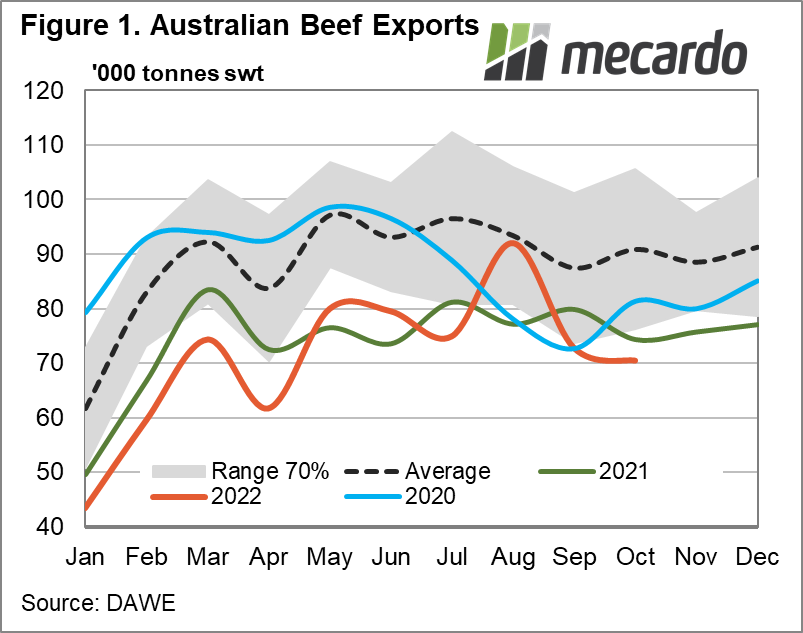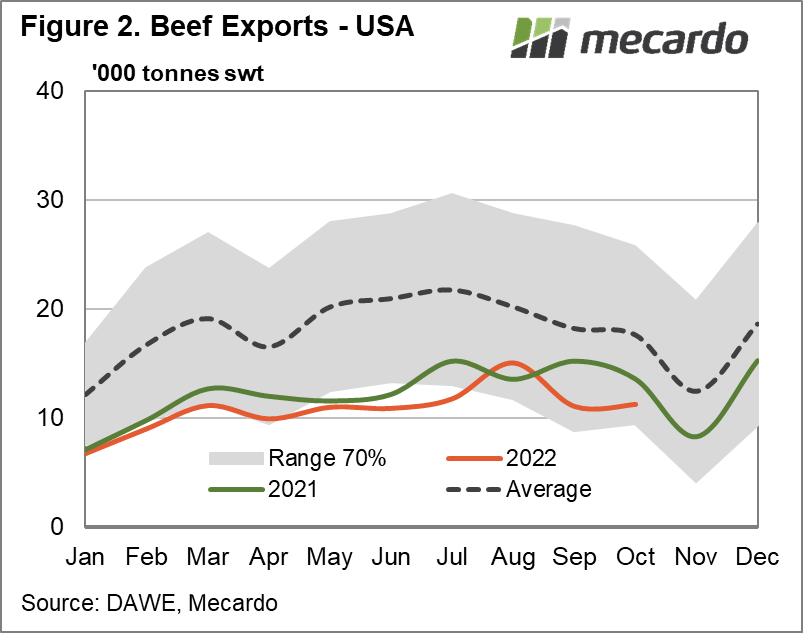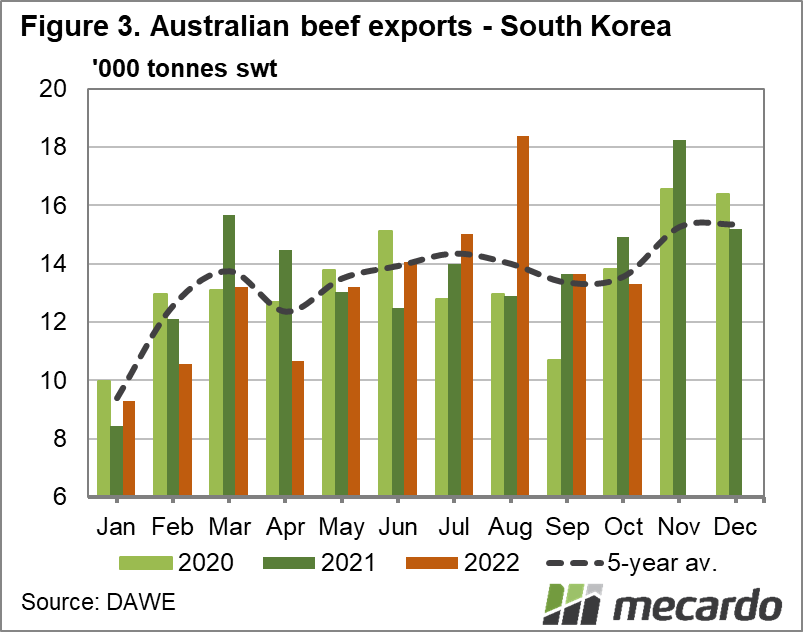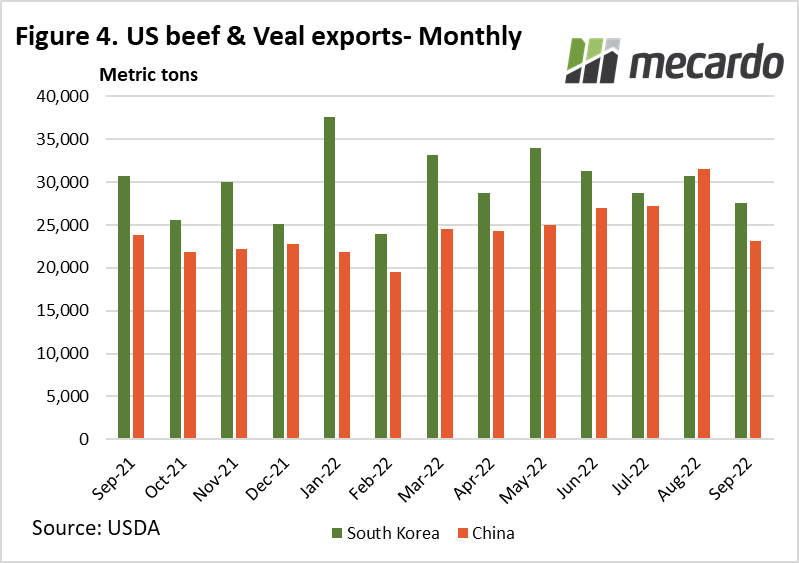Historically low beef export volumes leaving Australia’s shores is not new news. What is of interest in the latest export data is that export volumes to South Korea slipped substantially below 2021 levels after a strong six month rally. In addition, there was an apparent slip in the ravenous hunger of China for Australian beef, which raises some questions about the resilience of Asian demand.
Total Australian beef exports for October, adjusted for US data issues were, overall, down around 3% month on month to 70,479 tonnes. Comparatively, this clocks in at 22% below the five year average, and 5% below the level seen at the same time last year (figure 1).
Official figures for October beef exports to the US saw a huge 60% lift of 5.2K tonnes up to 13,752 tonnes, however, part of this quantity is related to a data issue last month that meant that beef export volumes to the US were understated in September, with volumes carrying over into October, causing an overstatement. As per our last update on beef exports, we estimate that the overstatement was in the region of 2,500 tonnes, which places the actual export volume to the US for October at around 11,000 tonnes.
Over the last six months, South Korean export volumes have been historically high, especially considering the elevated price of Aussie beef of late, indicating strong demand was present. October’s total of 13,297 tonnes was 11% below 2021 levels (figure 3). This is a far cry from August clocking in the second highest monthly volume in the last decade. If we look deeper into the situation, a tariff free 100kt of imported beef was allowed in July. Australian export volumes alone have soaked up 45kt of that already, while the US has exported a total of 58kt to South Korea over August & September at last count, indicating that the tariff free ride for Aussie (and US) beef was probably fully exhausted in October, impacting demand (figure 4).
Exports to China also slipped, down 4% month on month, with the volume of 14.318 tonnes 13% above 2021 levels. In comparison, since June, Australian beef exports to China had been riding a strong wave of demand, with volumes often 20-40% above 2021 levels. It’s possible that the slackening in import demand last month is a sign that COVID restrictions and economic woes in China are filtering though to consumer demand again. It’s not just us though- USDA data also indicates that Chinese imports of US beef have also been weakening recently, with US exports to China falling 27% month on month in SEP-22, compared to just a 4% fall in total US beef exports that month. (figure 4)
What does it mean?
At this time of year, slaughter should be rising, however, the disruption of wet conditions and rebuild has kept a lid on slaughter and hence export volumes. The exhaustion of food inflation busting tariff free quotas on imported beef have probably tempered South Korean demand for Aussie beef, while mounting economic woes may be hitting the Chinese dragon in the stomach, as evidenced by lower volumes of beef imports. Slackening Asian demand is never positive, but continued rebuild impetus this summer, and a weakening Aussie dollar should prove to be a strong counterbalancing influence, and support prices.
Have any questions or comments?
Key Points
- Australian beef exports fell 3% in October 2022
- There were data issues with US figures, but after adjustment, it appears OCT-22 tonnages were on par with SEP-22 at 11Kt.
- Weaker Korean demand linked to end of tariff free measures, but slowing Chinese demand of more concern.
- A depreciating AUD, plus strong rebuild momentum should help support prices.
Click on figure to expand
Click on figure to expand
Data sources: USDA, DAWE
















